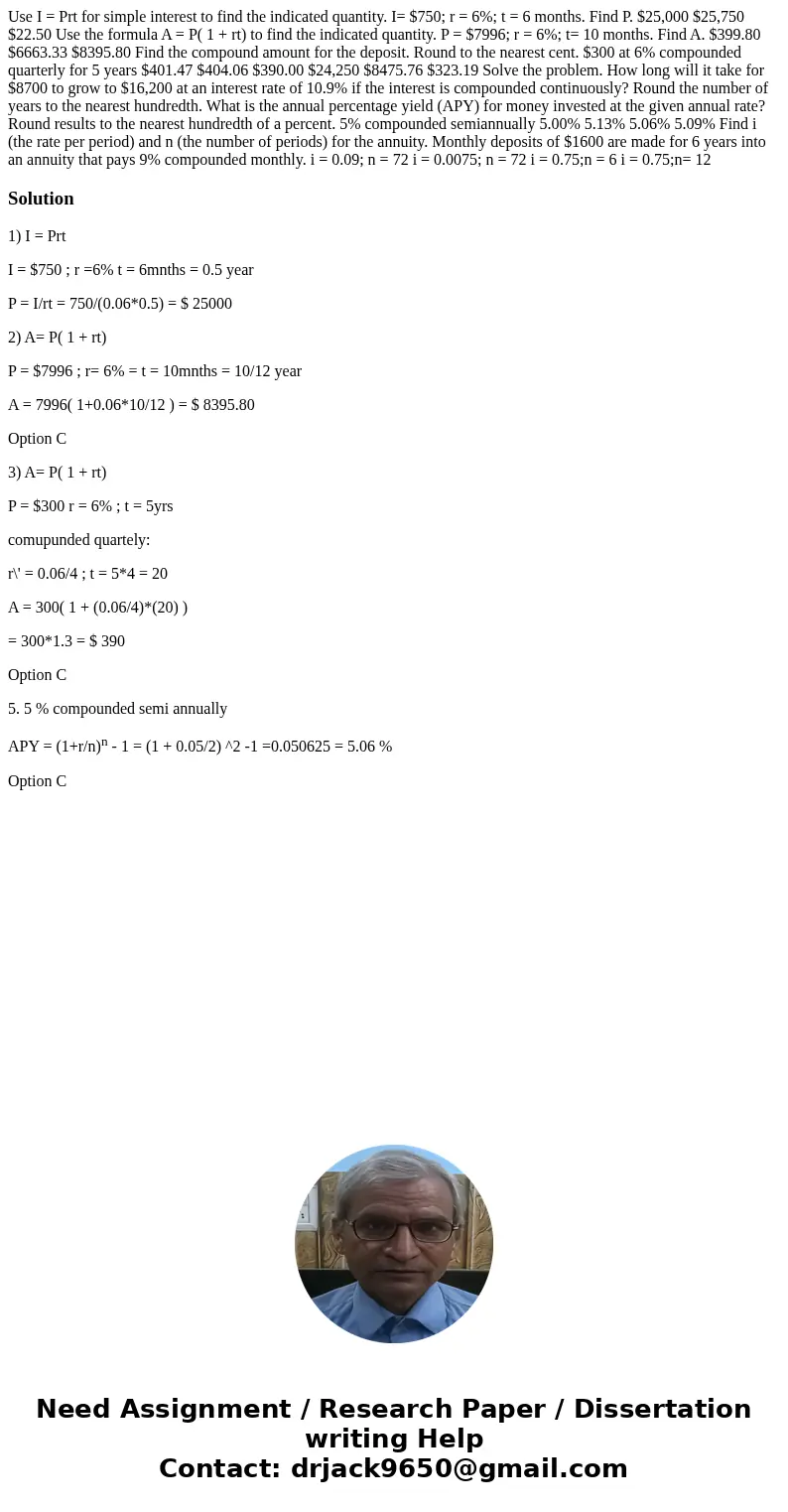Use I Prt for simple interest to find the indicated quantit
Use I = Prt for simple interest to find the indicated quantity. I= $750; r = 6%; t = 6 months. Find P. $25,000 $25,750 $22.50 Use the formula A = P( 1 + rt) to find the indicated quantity. P = $7996; r = 6%; t= 10 months. Find A. $399.80 $6663.33 $8395.80 Find the compound amount for the deposit. Round to the nearest cent. $300 at 6% compounded quarterly for 5 years $401.47 $404.06 $390.00 $24,250 $8475.76 $323.19 Solve the problem. How long will it take for $8700 to grow to $16,200 at an interest rate of 10.9% if the interest is compounded continuously? Round the number of years to the nearest hundredth. What is the annual percentage yield (APY) for money invested at the given annual rate? Round results to the nearest hundredth of a percent. 5% compounded semiannually 5.00% 5.13% 5.06% 5.09% Find i (the rate per period) and n (the number of periods) for the annuity. Monthly deposits of $1600 are made for 6 years into an annuity that pays 9% compounded monthly. i = 0.09; n = 72 i = 0.0075; n = 72 i = 0.75;n = 6 i = 0.75;n= 12
Solution
1) I = Prt
I = $750 ; r =6% t = 6mnths = 0.5 year
P = I/rt = 750/(0.06*0.5) = $ 25000
2) A= P( 1 + rt)
P = $7996 ; r= 6% = t = 10mnths = 10/12 year
A = 7996( 1+0.06*10/12 ) = $ 8395.80
Option C
3) A= P( 1 + rt)
P = $300 r = 6% ; t = 5yrs
comupunded quartely:
r\' = 0.06/4 ; t = 5*4 = 20
A = 300( 1 + (0.06/4)*(20) )
= 300*1.3 = $ 390
Option C
5. 5 % compounded semi annually
APY = (1+r/n)n - 1 = (1 + 0.05/2) ^2 -1 =0.050625 = 5.06 %
Option C

 Homework Sourse
Homework Sourse